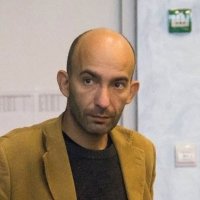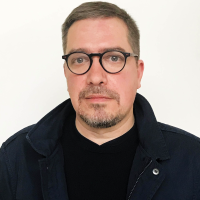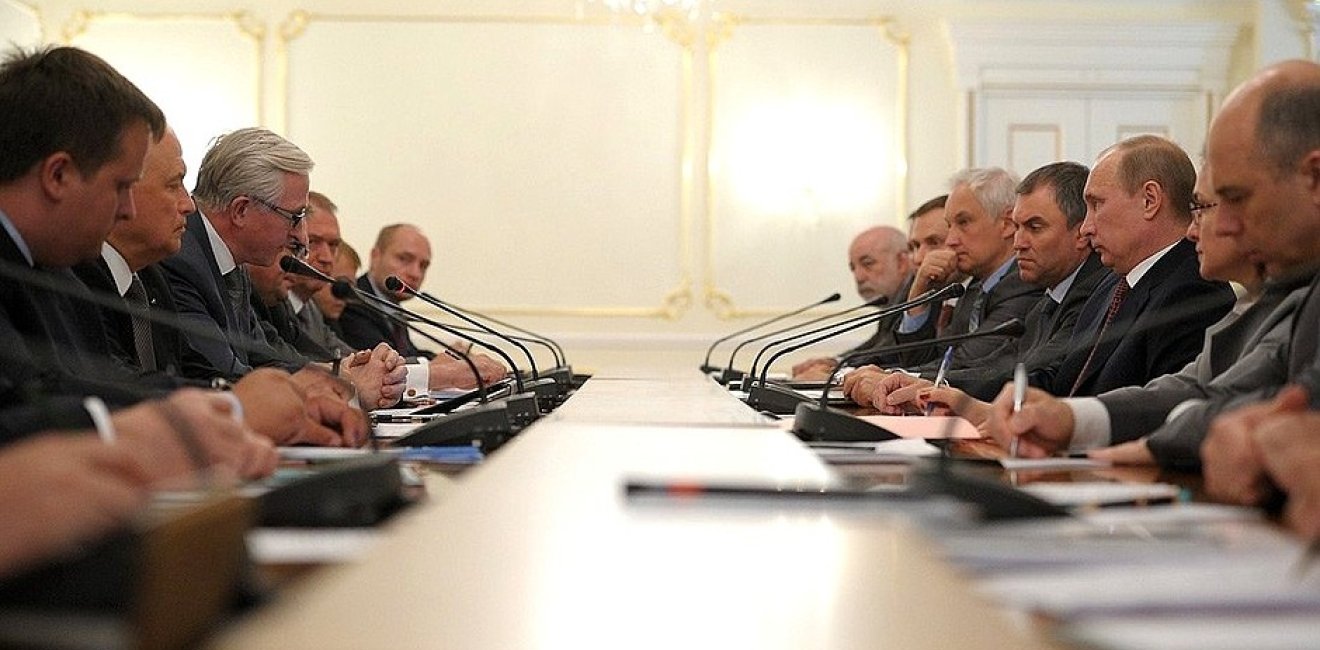
A blog of the Kennan Institute
BY BORIS GROZOVSKY AND MAXIM TRUDOLYUBOV In his two decades in power, President Vladimir Putin has prevented Russia’s economy from going under and kept most of the ruling elite in place. The secret behind Putin’s remarkable course of stability is a public-private partnership of sorts, a business arrangement, in which the public side is represented by Putin and the private side by his friends and other individuals who were able to make special deals within his system. The other pillar of Putin’s success is the fact that he did not go the way of Chávez, Maduro, or Erdogan. The Kremlin has consistently refrained from overregulating consumer prices or propping up Russia’s ailing currency. The Russian government has prioritized low unemployment, to the point of sacrificing wage increases and economic growth itself. Contrary to almost all expectations, Putin’s signature combination of crony capitalism and sound macroeconomic policies has so far stood the test of external sanctions and internal unrest. If Putin’s economic system is to face any serious threats, they will come from the system itself. Based upon the way it works now, it can only get more concentrated and less equal. As Raghuram G. Rajan and Luigi Zingales show in their book, Saving Capitalism from the Capitalists, businessmen often don’t want a true system of capitalism because they fear competition. If the giant corporations also have political muscle, they will use it to throttle the market to secure their position as profit-makers. Any company would be happy to receive subsidies and preferences from the government. And in a situation in which contracts are poorly enforced, as in Russia in the 1990s, it is more important for companies to build a network of relationships. Cronies’ Rule A market economy holds great benefits for ordinary people. But pro-market sentiments were at a low ebb in Russia in the 2000s, just as they are now. This is because of the economic downturn of the 1990s, when the economy was halved and most people had to struggle for a livelihood. Their jobs, social positions, lifestyles, and professional ties vanished in the economic turbulence of those years. Many weren’t paid for months and had to find other employment (which was a shock, as hiring under communism was effectively for life). So the market economy did not gain much traction with Russians and proved to be easily and quickly dismantled. While the costs of the transition to a market economy were felt by everyone, its benefits went to a tiny few. The state machine, the Soviet Leviathan, was destroyed, and the new, democratically-oriented state machine needed more time to get stronger. That created an opening, an opportunity for state capture by business interests. It was a capitalism without market institutions. The large corporations decided for themselves how much tax they were willing to pay. In the absence of a strong judiciary and the rule of law, the disputes were regulated by force, and the courts were replaced by the quasi-law of the street. The state was broke, and the oligarchs could cherry-pick the USSR’s assets and name any price they wished. In recently published conversations between Boris Yeltsin and Bill Clinton, the Russian president asked his friend Bill for IMF credit. Yeltsin needed it just to pay the salaries and pensions of people working in public institutions and state-owned factories in order to win the presidential elections in the summer 1996. In that era of state capture by individual businesses, Putin was just one of the Yeltsin-style civil servants who were caught up in the new way of doing business. As Karen Dawisha discusses in Putin’s Kleptocracy: Who Owns Russia?, a large part of the group around Putin today are the people with whom he was involved in the early 1990s. Building the System The main idea Putin seems to have taken from his time in St. Petersburg was that of the public-private partnership, but one constructed along Russian lines. Putin might have learned how it worked from Yury Molchanov, his first boss. Molchanov at the time was deputy rector of Leningrad University, responsible for foreign liaisons. Through his connections with Leningrad authorities and his position at Leningrad University, Molchanov was able to help Procter & Gamble and Coca-Cola set up operations in the USSR. He assisted with staff recruiting, advertising in the Soviet media, and the acquisition of plots of land. P&G’s first office in the USSR was in the Leningrad University’s rector’s mansion, and the joint venture between P&G and Leningrad University saw 1 percent of revenues transferred to the university. Putin, who had just returned to the USSR from East Germany, helped Molchanov create this joint venture. Later, Molchanov and his son founded LSR, one of the largest construction companies in Russia. In 2004 Molchanov became deputy governor of St. Petersburg and over the next eight years supervised several large public-private projects, including the Western High-Speed Diameter highway, a toll road in St. Petersburg, and expansion of the area of Vasilievsky Island, an important financial and residential center in the city, through landfill. One of his firms restored Putin’s palace in Strelna near St. Petersburg. Today Molchanov is vice president of the state-owned bank VTB, the second-largest bank in Russia and the most important dealmaker for Russian state-owned companies. Putin learned from his years in St. Petersburg that property rights are a hindrance to the kinds of exchanges that drove the business and politics of the day, that only informal control over assets is important, and that friendship with the right people matters. He learned that your business will do well if you are protected by the siloviki, so a public-private partnership is the best way to do business. When Putin became president of Russia, he step-by-step built the crony capitalism system, through which his good friends have gained control of large chunks of the Russian economy. This was done in several phases. In the first phase, 2000–2003, Putin reduced taxes and the regulatory burden on businesses. These steps were necessary because in Yeltsin’s time, the tax and regulatory burden on businesses was high but everyone ignored it. Once he gained power, Putin had first to align the rules with existing reality. Putin entered this phase as first among equals and exited it an authoritarian ruler. Putin’s foes—Vladimir Gusinsky, Boris Berezovsky, Yury Luzhkov, Mikhail Khodorkovsky, and others—were thrown out of politics. His friends, including Yury Kovalchuk, Gennady Timchenko, Arkady and Igor Rotenberg, Alexei Miller, Dmitry Medvedev, Igor Sechin, Herman Gref, Alexei Kudrin, and Vladimir Yakunin, took command of the economy. The second phase was the period 2004–2008, when Putin created maximum opportunities for public-private partnerships with his cronies. Putin had reasonably good relations with Western leaders throughout this period, so Russian oligarchs old and new could turn a profit in Russia and move capital to Europe or the United States to secure a comfortable life for themselves and their families. Learning to Contain the Backlash This scheme of turning profits and moving capital to Western banks started to break down in 2008, during the war with Georgia, and met its ultimate demise in 2014, during the war with Ukraine. But even before the annexation of Crimea, in late 2012 Putin had warned the powerful businessmen that it would be better to hold assets domestically. For now, economic growth has ended, but the system proved capable of growing the incomes of Putin’s associates. Putin had to look for some means to develop a new consensus with the bulk of Russia’s increasingly dissatisfied population. He found it in military action in Crimea, which emphasized to the domestic audience both Russia’s sovereign behavior and its status on the world stage, and in ratcheting up anti-Western policies and rhetoric. The irony of the moment is that the sanctions regime is forcing Putin to entrench his crony system even further. The state coffers and state-owned banks remain the only sources of investment. The economy can only be driven by large-scale state-funded projects, such as the Crimean bridge or the soccer stadiums and other infrastructure built for the 2018 FIFA World Cup. Under these circumstances the large state-run corporations can only get bigger, and thus a larger share of the Russian economic pie gets transferred to entities owned or run by businessmen close to Putin. Control, Intervene, Entrench Putin’s approach proved functional because he has not made ruinous mistakes like over-regulating consumer prices or meddling with the conservative monetary and credit policy instituted by his central bank. As the Kremlin refrains from propping up Russia’s currency, the ruble is going down (benefiting the exporters), but the reserves are at confident levels. Russia has little debt and low inflation, the exchange rate is low, and, all in all, Russia has withstood the sanctions pressure so far. Russians appreciate stability and are ready to put up with low wages. Yet the Kremlin realizes that the current stagnation and general lack of development will, with time, cause social unrest. No economist expects the Russian economy to grow more than two percent during the six years until the next presidential election in 2024. As liberalization seems out of the question, the Kremlin will have to introduce even more dirigisme. It has not escaped Putin’s attention that some Russian companies are now seeing good profits from the conjunction of strong exports and a weak ruble. The original Kremlin idea of simply confiscating “excess profits” from large exporters has now been shelved, but a revised extraction plan is being developed in which Putin’s aides will literally tell big businesses in which projects to invest. Putin’s old buddies have long known in which projects to invest and how to be socially responsible the Kremlin way. Businesses in Russia often find themselves with a choice to make: either stand up for their independence and face pressure, prosecution, and financial ruin or learn what Putin’s friends learned long ago: one has to earn the right to run a business in Russia. Following these not too subtle nudges is better for business owners than nationalization. The important test is whether this new level of state intervention in the economy will finally prove too much.
Authors

Journalist and public educator; author of Telegram channel EventsAndTexts

Editor-at-Large, Meduza

Kennan Institute
The Kennan Institute is the premier US center for advanced research on Eurasia and the oldest and largest regional program at the Woodrow Wilson International Center for Scholars. The Kennan Institute is committed to improving American understanding of Russia, Ukraine, Central Asia, the South Caucasus, and the surrounding region through research and exchange. Read more

Explore More in The Russia File
Browse The Russia File
Chechnya as a Model of Modern Russia

Russia’s Indigenous Communities and the War in Ukraine

Gas and Power in a Changing US–Russia Relationship

